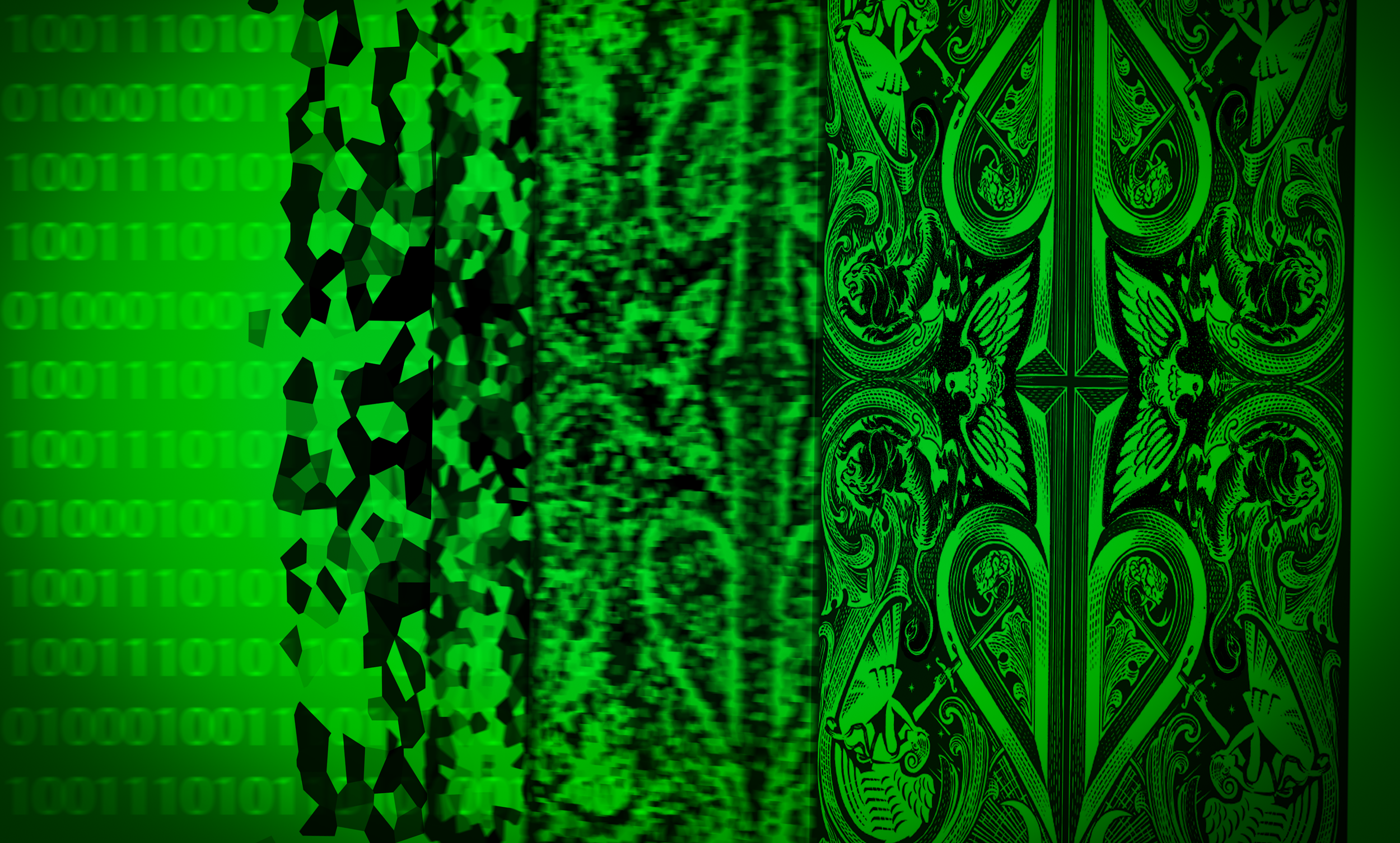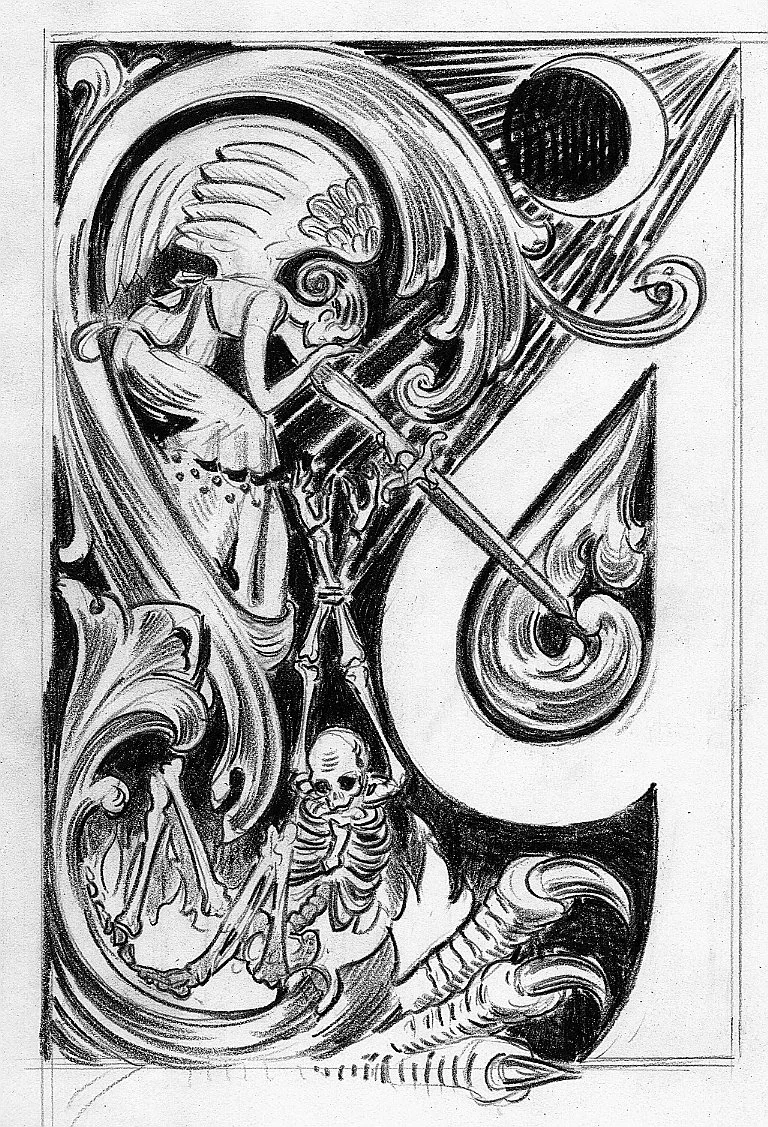AI, AI, Oh!
Here we go again. Technology is sticking its nose where it doesn’t belong. Artificial Intelligence is a topic of conversation I can’t seem to avoid, and one that gets me steamed. You would think that the stench of my melting flesh would clear the room, but instead, I’m asked over and over what I think about AI. I can share the G-rated version here, but after a few drinks and a long day, I can get downright surly about it.
Let’s first dissect the name, Artificial Intelligence. Anything artificial is often considered cheap or a substitute for something that has genuine value, and intelligence seems like an oxymoron, since the information gathered through the cloud is borrowed from collective human input. If I were to name it, I would call it Cobbled Contraban, since everything that it spits out was taken without permission from a human somewhere on this planet. It raises numerous questions about ownership and intellectual property – originality is not a factor in this technology. Defenders of AI would say that if you post it, you’re willingly giving up content. I doubt that was the intent of the person posting, regardless of the lengthy legal jargon that frames the rules governing internet content.
What irks me most is that AI has infiltrated creative fields such as commercial art, design, music, and writing. I’m fine with technology assisting with complicated calculations, balancing accounts, guiding a rocket into space, or preventing a nuclear meltdown, but those oversights aren’t substitutions for ingenuity; they are safeguards to maintain accuracy, provide efficiency, and consistency of tedious tasks that few people relish doing.
But when it comes to creativity, it has no place. The human experience is what creativity is founded upon, not barnacles of data that attach themselves to random search criteria. I asked AI who “Mark Stutzman, artist,” is, and the search result was quite swift and accurate. However, I recognized the content, most of which was culled from my personal website or articles written about my work. Specifics are glossed over, thankfully, since that’s where AI searches fall short.
This boiling down of information can be extremely helpful when one is quickly browsing the internet, provided the information available is true and accurate. Without knowing information sources, you could be reading a summary that is entirely off. And with all the cyber sabotage out there, flooding the internet with false information is easy. Competing companies could be discredited, and vital information about health, safety, or security could be skewed since AI relies on lightning-fast search engines. ChatGPT is convincing in its ability to weave together a summary seamlessly. Yikes! I hope I didn’t just give someone a bad idea.
I Googled another question about originality and ownership of AI-generated content, and this was the response.
“An AI-generated image does not inherently qualify as ‘original content’ in the eyes of U.S. copyright law. This is because originality, for copyright purposes, is tied to human authorship, and AI is not considered a human creator.”
Good!
Concept drawing for David Blaine’s Split Spades card back design.
Even while drafting this blog, Grammarly is getting in my business, telling me which words to choose. I love the spelling assistance, but I want to write in my own voice, not in that of a robot or a schoolteacher. Children of this generation will never know a world without writing assistance. Will they learn to spell, craft a meaningful sentence, or communicate in a humanistic way? Just like I said as a child, “When am I ever going to use algebra?”, they will say, “Why do I need to be able to write and spell?” let alone use a pencil or pen. Schools have already abandoned teaching cursive writing, opting instead to teach kids to do their work using keyboards and tablets. That’s certainly going to lead to illegible grocery lists in the event of an apocalypse and a technology meltdown.
Handwriting is an art form in itself, so our boards of education are making children increasingly dependent on technology while robbing them of learning dexterity and independence from electronic devices. Steve Jobs is cheering from wherever he landed in the afterlife. Transcribing dictation is taking it one step further, and our devices are listening to us all day long. That’s why those pop-up ads are tuned into your last conversation. Is that convenience or an invasion?
The foundation of AI is not a bad thing, unless you’ve watched 2001: A Space Odyssey. The first time I saw it, it seemed hundreds of years into the future, not 56. Could AI overreach in its pursuit of human dominance? Certainly! Humans created it to replicate human traits. As one of the most sinister characters in a television drama said, “Power is superior to wealth because wealth is temporary.” If you remember that line, it was President Frank Underwood in House of Cards who uttered it into the viewer’s eyes from his blackened soul. His direct dialogue into the camera is cringeworthy.
So, as creative professionals debate AI’s unwelcomed presence, amateurs applaud it, hoping it will open doors so they can join an industry once reserved for trained, devoted, and tortured souls. The eagerness to assume the title “creator” turns my stomach. It’s not cool, it’s painful work that gnaws at you day and night, and the rewards are fleeting, as you are only as good as your last job.
Creative contracts clearly state that infringement liability falls on the shoulders of the creative professional doing the work. Those in a position to commission may not have the expertise to distinguish originality from AI, whether in written, illustrated, or recorded forms. It’s of no consequence to the client, and good luck proving or disproving where a concept or the execution originated. By the way, you can’t copyright an idea, only an executed work.
With all due respect, AI, in my opinion, needs to stay in its lane and out of mine and anyone else’s lane who is generating work from the heart and mind. Don’t undermine one of the few humanistic attributes left on this planet. Fostering creativity remains important as it shapes us and defines cultures over time. It’s a commitment, a calling, and, for now, a means of employment and a massive contribution to a productive society that is far more livable and interesting as a result.
When I was a teen and contemplating my future, what I did best was make shit. Whether it was drawing, painting, sculpting, building, or designing, all my thoughts and free time were spent making or beautifying something. I was never an academic, so I chose a two-year art school program to pursue a career in the creative industry. The curriculum was intense and swift – In and out with no academic course, only art-related classes. I was one of two students from my high school who pursued this discipline. And when I got to the Art Institute of Pittsburgh, the students there were much the same—each was one among hundreds of high school classmates who wanted to pursue a career in commercial art. My alma mater has since closed because it unsuccessfully transitioned from a two-year vocational program to a four-year accredited college, an idea imposed upon it by parents who wanted their children to have a more respectable degree for their investment. It was the kiss of death because the school’s administrators replaced the pursuit of excellence with convention. We all know artists are far from conventional.
After this transition, other, more notable art colleges welcomed a surge in enrollment, accepting anyone willing to pay a tuition that was disproportionate to the potential earnings upon graduation. Parents didn’t complain about that, however. At least their child, who was struggling in calculus, was college-bound, and there were bragging rights to accompany it. When I went to art school, however, my parents shrugged and probably expected me to return home after graduation. There were no expectations.
Art schools began to suddenly fill up with students who were underachieving high schoolers, kids with low academic scores, and, in some cases, those who were not considered college material. The perception of an art degree was that anyone could do it. It’s not as if the degree is important. Nobody dies if you suck. Apparently, any youngster can complete the curriculum with the aid of technology, learning software instead of life drawing. But what exactly are they learning outside of filling blank space?
As I witnessed the bar being lowered again and yet again, I reflected upon my inspiration for becoming an artist. The Great Masters of the Renaissance, the Impressionist movement, and notable illustrators from the Golden Era, such as Wyeth, Leyendecker, Cornwell, and Rockwell, were truly inspirational to me. Making art can be grueling, requiring sacrifice and devotion. Many nights out and vacations were passed up so I could take on an ambitious project and make the deadline. Each project hones your skills, your mind, and leads somewhere unique in your creative journey. We shouldn’t discard all that so a novice can dictate into AI image generation apps to make “artwork” that represents this generation. That dictation has always been the job of a creative director, not the artist generating the work. AI cuts out the most important person in the mix – the artist!
The ease of image creation is deceiving a culture into thinking this new age process makes you an artist. And perhaps it does if my definition is antiquated. Just because robotics has entered operating rooms doesn’t make a gamer skilled on a controller qualified to perform surgery, although that could be a popular YouTube channel. Gamer vs. Surgeon. What could go wrong?
When it comes to the arts, the skill sets and motivations are exclusive, like it or not. Education in the arts is frequently viewed as frivolous or expendable. So, why then, is boasting one’s artistic prowess spreading like a virus? Artists shouldn’t be replaced by technology simply because they inadvertently feed it through the internet, handing over access to the untrained to use—here bit, there bit, everywhere, bit bit. Now you get this article’s title.
“Don’t feed the animals” is a sign commonly found at animal habitats and zoos. For your own safety, it’s a warning that should be heeded. On the internet and with ChatGPT, tens of millions of images are being generated daily across all platforms. That’s an alarming amount of visual interest that has suddenly emerged. I wish those demands were requested of professionals seeking employment, but then, one might have to share the credit.


